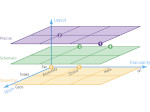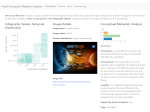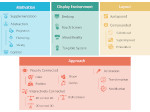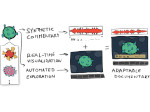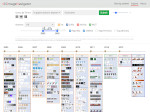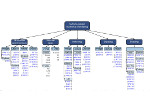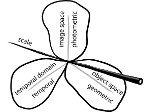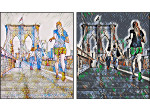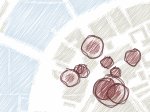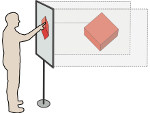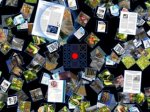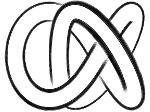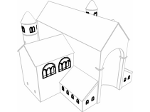Stylizing Silhouettes at Interactive Rates: From Silhouette Edges to Silhouette Strokes
Description:
A way to create effective stylized line drawings is to draw strokes that start and stop at visible portions along the silhouette of an object to be portrayed. In computer graphics to date, algorithms to extract silhouette edges are many, although putting these edges into a form such that stylized strokes may be applied to them has not been greatly covered, so that existing methods are either time-consuming or presented vaguely. In this paper, we introduce an algorithm that takes a set of silhouette edges originating from polygonal meshes and efficiently computes the visible parts of the edges before connecting them to form long smooth silhouette strokes to which stylization algorithms may be effectively applied. Features of our algorithm that gain efficiency and accuracy over existing methods is that we directly exploit the analytic connectivity information of the mesh in combination with the available z-buffer information during rendering, and filter artifacts in connected edges during the process to improve the visual quality of strokes after stylization.
Paper download:  (810 KB)
(810 KB)
OpenNPAR video:
Download the video as AVI (13.9MB) or as MP4 (4.5MB)
Demo:
- Silhouette generation and stylization demo v1.3 (Win32, 3.7 MB; also works under Linux using Wine)
- Models to be used with the demo (2.2 MB)
Cross-Reference:
- This paper is based upon OpenNPAR, see the project page about this system as well.
Main Reference:
Other Reference:
This work was done at the Department of Simulation and Graphics at the University of Magdeburg, Germany.


